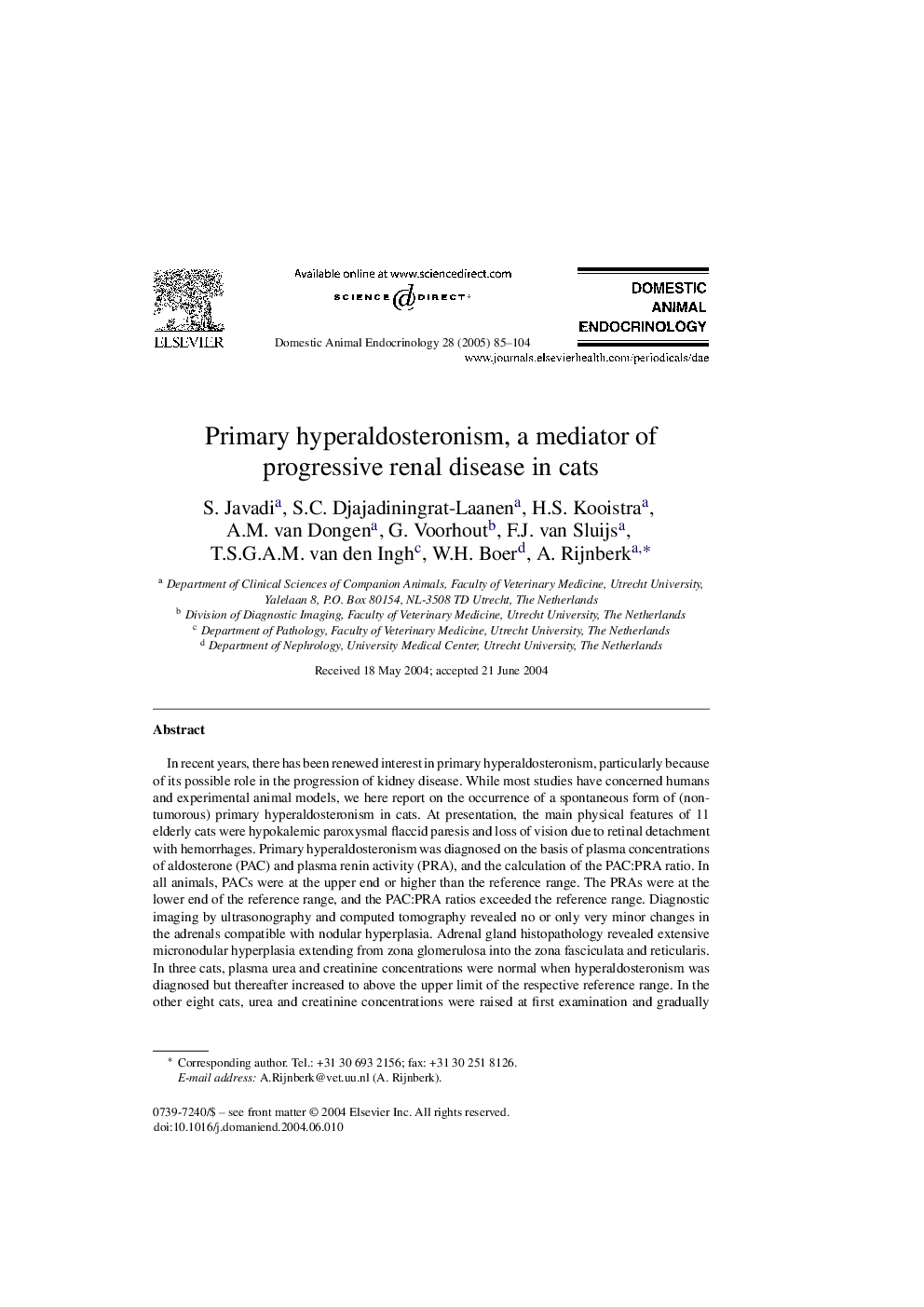| Article ID | Journal | Published Year | Pages | File Type |
|---|---|---|---|---|
| 8967253 | Domestic Animal Endocrinology | 2005 | 20 Pages |
Abstract
In recent years, there has been renewed interest in primary hyperaldosteronism, particularly because of its possible role in the progression of kidney disease. While most studies have concerned humans and experimental animal models, we here report on the occurrence of a spontaneous form of (non-tumorous) primary hyperaldosteronism in cats. At presentation, the main physical features of 11 elderly cats were hypokalemic paroxysmal flaccid paresis and loss of vision due to retinal detachment with hemorrhages. Primary hyperaldosteronism was diagnosed on the basis of plasma concentrations of aldosterone (PAC) and plasma renin activity (PRA), and the calculation of the PAC:PRA ratio. In all animals, PACs were at the upper end or higher than the reference range. The PRAs were at the lower end of the reference range, and the PAC:PRA ratios exceeded the reference range. Diagnostic imaging by ultrasonography and computed tomography revealed no or only very minor changes in the adrenals compatible with nodular hyperplasia. Adrenal gland histopathology revealed extensive micronodular hyperplasia extending from zona glomerulosa into the zona fasciculata and reticularis. In three cats, plasma urea and creatinine concentrations were normal when hyperaldosteronism was diagnosed but thereafter increased to above the upper limit of the respective reference range. In the other eight cats, urea and creatinine concentrations were raised at first examination and gradually further increased. Even in end-stage renal insufficiency, there was a tendency to hypophosphatemia rather than to hyperphosphatemia. The histopathological changes in the kidneys mimicked those of humans with hyperaldosteronism: hyaline arteriolar sclerosis, glomerular sclerosis, tubular atrophy and interstitial fibrosis. The non-tumorous form of primary hyperaldosteronism in cats has many similarities with “idiopathic” primary hyperaldosteronism in humans. The condition is associated with progressive renal disease, which may in part be due to the often incompletely suppressed plasma renin activity.
Related Topics
Life Sciences
Agricultural and Biological Sciences
Animal Science and Zoology
Authors
S. Javadi, S.C. Djajadiningrat-Laanen, H.S. Kooistra, A.M. van Dongen, G. Voorhout, F.J. van Sluijs, T.S.G.A.M. van den Ingh, W.H. Boer, A. Rijnberk,
